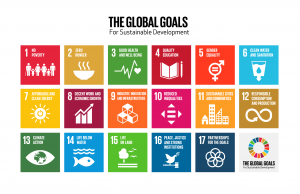We believe that you, as a future expert in your field, must acquire the necessary skills to work data-driven. Employers are not only urgently looking for specific specialists with practical knowledge of data, but also for people who understand how data can be used to develop new innovative solutions.
In every domain, organisations are looking for people with practical knowledge of data and hands-on skills to translate insights into creative solutions. At the Minor Big Data & Design we bring creativity and technology together to shape the continuously changing society.
Admission
There are no entry requirements for this minor program.
The Examination Board determines which minors do not have a higher professional education level and/or have an unacceptable overlap with the compulsory curriculum of your own study programme. Check at the page Not allowed minor courses under your institute which minors are not allowed. This page will be updated from 29 February 2024 for the 2024-2025 minor offer.
Content
Data is everywhere! Consider, for example, how you travel with your travel card, how you gain insight into your energy consumption, the data you collect when you register your favorite run or how Netflix makes your recommendations for an evening of binge watching. The data that is then collected is called Big Data.
By analysing this big data with smart techniques, it is possible to automatically create personal profiles, determine the emotions of readers/viewers and make predictions about their actions. During the minor Big Data & Design you will learn to convert these technical insights into user-friendly applications.
During in-depth lessons you work on various projects and relevant issues from the field. We work based on your specific background and motivation to use data in your context. We focus on the most recent technologies and future possibilities. The inevitable ethical issues are also discussed. We investigate how the algorithms work, which will enable you to create better designs. You develop the designs into prototypes and improve them through testing. You will also learn basic Python programming, which will help you feel comfortable working with data and prototyping your concepts. You don’t have to be a hardcore computer nerd to do this!
Learning objectives
After this minor you can:
- Critically examine the impact of big data on our society.
- Use design research to create innovative data-driven concepts.
- Collect, clean, analyse and visualise data from various sources through tools and basic programming.
- Create and communicate insights, predictions and actions from data using basic machine learning techniques and statistics.
- Learn new skills and methods within design research and data science using a self-directed, experimental, inquisitive learning style.
Courses
We distinguish 3 components which will come together in projects, hackathons and design crunches. To prepare you for these projects and design crunches, you work on smaller assignments and take part in workshops, discussions, and lectures.
Design class
Since we focus on data-driven concepts and smart applications in these classes, you will need to gain some elementary design skills. You will also learn to understand data from multiple perspectives (economical, philosophical, and ethical) and form your own opinion by reading relevant literature, having discussions, and attending workshops. Research is also important in this minor, starting from data informed research and ending with research through design.
Technical class
In these classes you will learn to work with Python to collect, analyse and visualize data using various algorithms, tools, and techniques. From block two you will learn to make predictions based on data and explore more advanced technologies such as facial recognition, object detection and language processing.
Combined class (Data research lab)
Both the technical, and the design teacher are present in these lessons. Here you can continue working on your research and assignments and delve deeper into the tools to get to know the domain of big data and design better.
Beside the 12 to 16 hours of classes divided over three days you should count around 24-28 hours of self-study. You are encouraged to further explore topics of interest to developing stronger technical and design skills.
Assessment
You will be assessed at the end of the semester with an oral assessment and portfolio. You submit one design portfolio and one technical portfolio. If the design portfolio is assessed sufficiently, you will receive 20 EC, and for the technical portfolio 10 EC.
Every 6 weeks we will give you clear feedback to make sure that the assessment at the end does not come as a surprise. If you fail on one or more learning outcomes at the final assessment, you will be given an opportunity to resit these with an assignment.
Literature
The field changes rapidly and every year we decide on new literature to support the learning objects. You will receive a definite reading list before the start of the minor.
Schedule
This course takes place in period C/D, starting in February.
With the exception of the first teaching period of the academic year (starting September), the lesson and test schedules are always posted on Mijn Rooster four weeks before the start of each teaching period. The schedule for the first teaching period of the academic year can be found on the site three weeks before the start. The most up-to-date schedule is always visible on Mijn Rooster.
At HU, full-time education may be scheduled between 08:30 and 19:00.
Additional costs
None.

This minor course is marked by the Green Office as a sustainable minor. This means that by participating in this minor course, you can contribute to one or more of the Sustainable Development Goals from the UN.